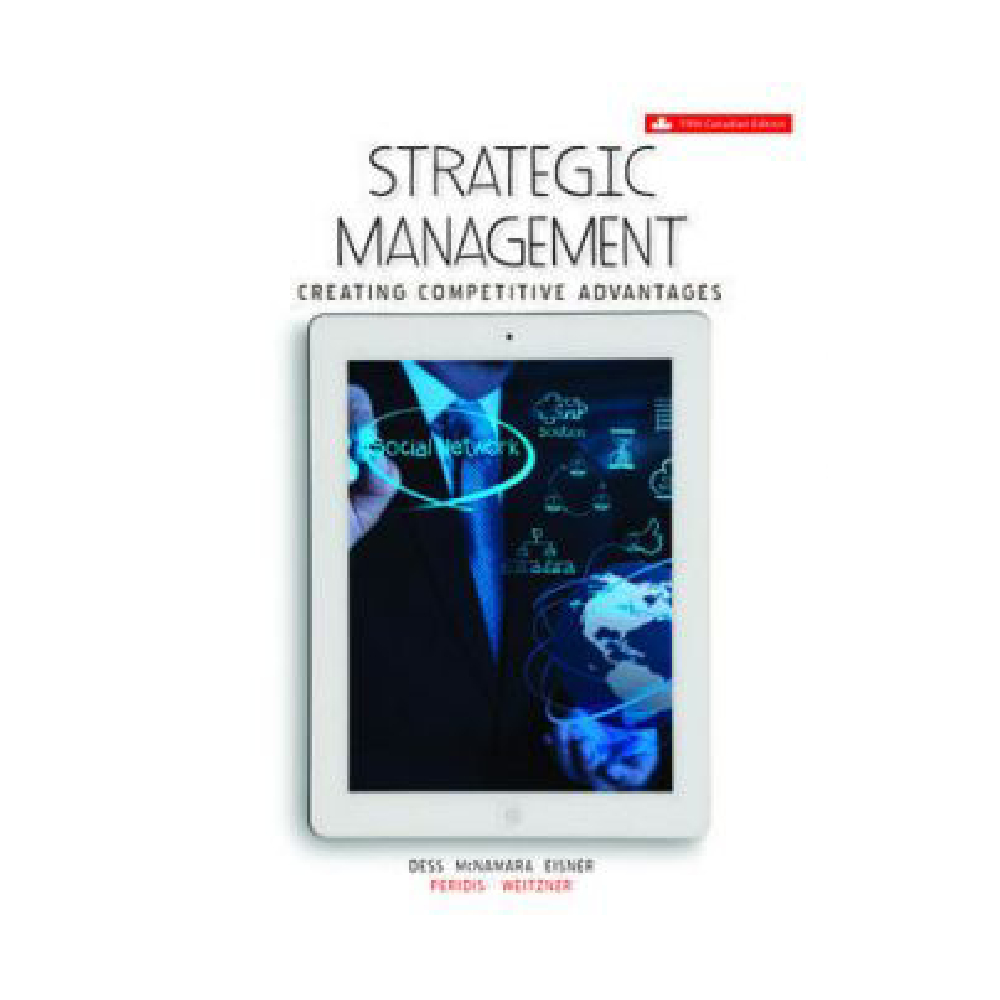Strategic Management Creating Competitive Advantages 5th Canadian Edition By Gregory – Test Bank
$55.00
Strategic Management Creating Competitive Advantages 5th Canadian Edition By Gregory – Test Bank
You will receive this product within 24 hours after placing the order
Overview
Chapter 11
Strategic Leadership: Creating a Learning, Ethical, and Socially Res
Multiple Choice Questions
- Effective leadership is like a three-legged stool consisting of all of the following, except
A. dedication to maintaining the status quo.
B. nurturing a culture dedicated to excellence and ethical behaviour.
C. determining a direction.
D. designing the organization.
Difficulty: Easy
Accessibility: Keyboard Navigation
Learning Objective: 11-01 The three key activities in which all successful leaders must be continually engaged.
Topic: 11-01 Leadership: Three Interdependent Activities
- A leader’s role in developing a strategic vision includes the following attributes., except
A. a clear future direction.
B. a framework for their organization’s mission and goals.
C. enhanced employee communication and commitment.
D. power in overcoming resistance to change.
- In terms of nurturing a corporate culture, Canada’s Cirque du Soleil was transformed by Guy Laliberte who
A.set a firm direction.
B. pushed himself and his artists to continuously experiment.
C. was poor at rooting out unethical behaviour.
D. maintained the status quo.
- Leaders play a key role in developing and sustaining an organization’s:
A.status quo
B. culture
C. reporting relationships
D. rules and regulations
Difficulty: Easy
Accessibility: Keyboard Navigation
Learning Objective: 11-01 The three key activities in which all successful leaders must be continually engaged.
Topic: 11-01 Leadership: Three Interdependent Activities
- Refusal to share information, conflicts over resources, conflicts between departments and divisions, and petty interpersonal differences are symptoms of which type of barrier to change?
A.Systemic barriers
B. Political barriers
C. Behavioural barriers
D. Intellectual barriers
Difficulty: Medium
Accessibility: Keyboard Navigation
Learning Objective: 11-02 The three elements of effective leadership: integrative thinking overcoming barriers to change; and the effective use of power.
Topic: 11-06 Overcoming Barriers to Change
- Which of the following does not explain why organizations are prone to inertia and slow to change?
A.Personal time constraints
B. Political barriers
C. Vested interests in the status quo
D. Organizational investments
Difficulty: Hard
Accessibility: Keyboard Navigation
Learning Objective: 11-02 The three elements of effective leadership: integrative thinking overcoming barriers to change; and the effective use of power.
Topic: 11-06 Overcoming Barriers to Change
- All of the following constitute organizational bases of a leader’s power, except
A. legitimate power.
B. reward power.
C. referent power.
D. coercive power.
Difficulty: Easy
Accessibility: Keyboard Navigation
Learning Objective: 11-02 The three elements of effective leadership: integrative thinking overcoming barriers to change; and the effective use of power.
Topic: 11-07 The Effective Use of Power
- Expert power
A.is derived from organizationally conferred decision-making authority.
B. arises from a manager’s access, control, and distribution of information that is not freely available to everyone in an organization.
C. is derived from referent power.
D. is derived from the leader’s capability and knowledge in a particular field.
- Coercive power
A.is the power exercised by use of fear of punishment for errors of omission or commission by employees.
B. is the power of persuasion exercised by a charismatic leader to get compliance from reluctant subordinates.
C. arises from a manager’s access, control, and distribution of information that is not freely available to everyone in an organization.
D. is the ability of the leader or manager to confer rewards for positive behaviours or outcomes. - The source of referent power is
A.a subordinate’s identification with the leader.
B. a leader’s identification with the subordinates.
C. derived from the fact that the manager can potentially act as a reference when the employee applies for another job.
D. derived from the manager’s ability to provide effective incentives to employees.











Reviews
There are no reviews yet.